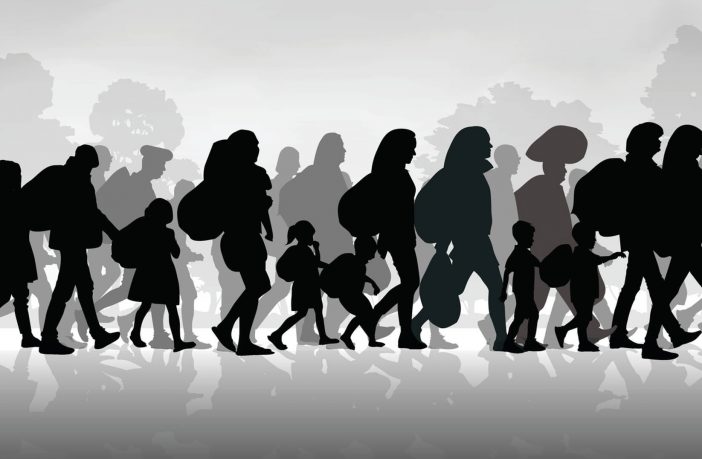Recent immigrants to the United States bring more than three additional migrants into this country – an average that’s 30 percent higher than the “chain migration” rate of the early 1980s.
The numbers will only go up if amnesty is granted to some 800,000 recipients of President Barack Obama’s Deferred Action for Childhood Arrivals (DACA).
U.S. chain migration policies allow immigrants, upon attaining citizenship, to petition for adult brothers and sisters, adult sons and daughters, and parents. Each of those individuals can, in turn, do the same, thereby establishing multiple new family chains.
The endless piling-on process – unique to the United States – yields millions more newcomers without regard to their labor skills or their impact on native-born workers. Meantime, sponsorship of parents is graying the U.S. migrant chain, with attendant strains and yet-to-be-calculated costs to the nation’s health care system.
Out of 33 million immigrants admitted to the United States from 1981 to 2016, about 20 million – 61 percent — were chained migrants.
Mexico leads the chain gang with each new immigrant sponsoring an average of 6.38 relatives to follow. Chinese arrivals are close behind at 6.24, with India next at 5.11 and the Philippines at 5.07, according to a report by the Center for Immigration Studies.
With Mexican nationals constituting the bulk of DACA beneficiaries, America can expect 3 million or more immigrants from its southern neighbor via a DACA amnesty. That prospect prompted President Donald Trump to Tweet: “CHAIN MIGRATION cannot be allowed to be part of any legislation on Immigration!”
While Congress dickers over DACA, Sen. Tom Cotton, R-Arkansas, seeks to blunt the effects of any D.C. deal by cutting the chain. Under the RAISE Act he co-authored with Sen. David Perdue, R-Georgia, only spouses and minor children could apply for admission based on family ties.
The RAISE restrictions on chain migration would lower overall immigration to 637,960 in the first year — a 41 percent drop — and to 539,958 by the tenth year — a 50 percent reduction, according to the senators.





7 Comments
4.5
I agree lets do both. E-verify is so important, a lot of teens need to work in Fast food chains to pay for their cars , clothes, and movie dates, but with out e-verify a lot of those low paying jobs go to low skill migrants. The Wall is as equally important to deter people from coming. However if we cater to people by having everything in their native language that in turn makes them think its ok not to learn the language (English) and so we need to stop the whole catering to people because that attracts them, and we will become a country with out borders or language:(
I live in an area for several decades that has been seeing tremendous white flight due to Latino gangs. The local fast foods especially are no longer with white teens as my daughter was when she worked in one while in high school. Many have older Latino females working who struggle to speak English and take orders if you cannot speak Spanish with them. I refuse to move as yet but have resigned myself to traveling many miles to go to eatery or grocer where I feel I am in America and not Mexico City.
DACA needs to go! We need the wall and E-Verify! Why is it such a big deal that Americans in America want to put America and Americans FIRST!
WHY NOT BOTH ??? The Wall and E-Verify ?? !!
Or are you part of the destroy America group ?? (;^)) !!
i agree let’s get it done —both of them
I agree and already posted similar